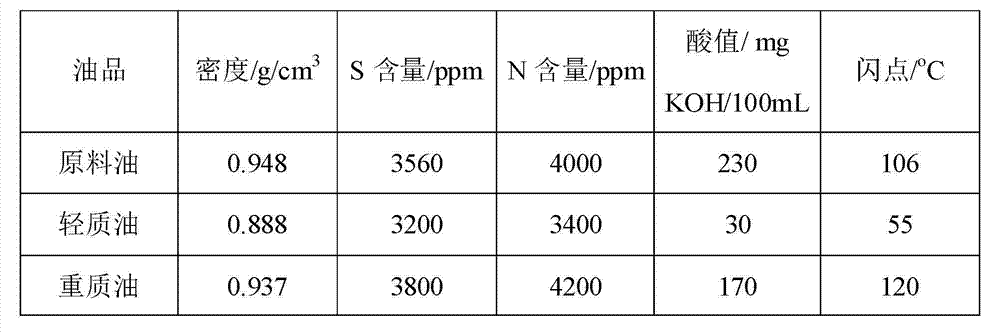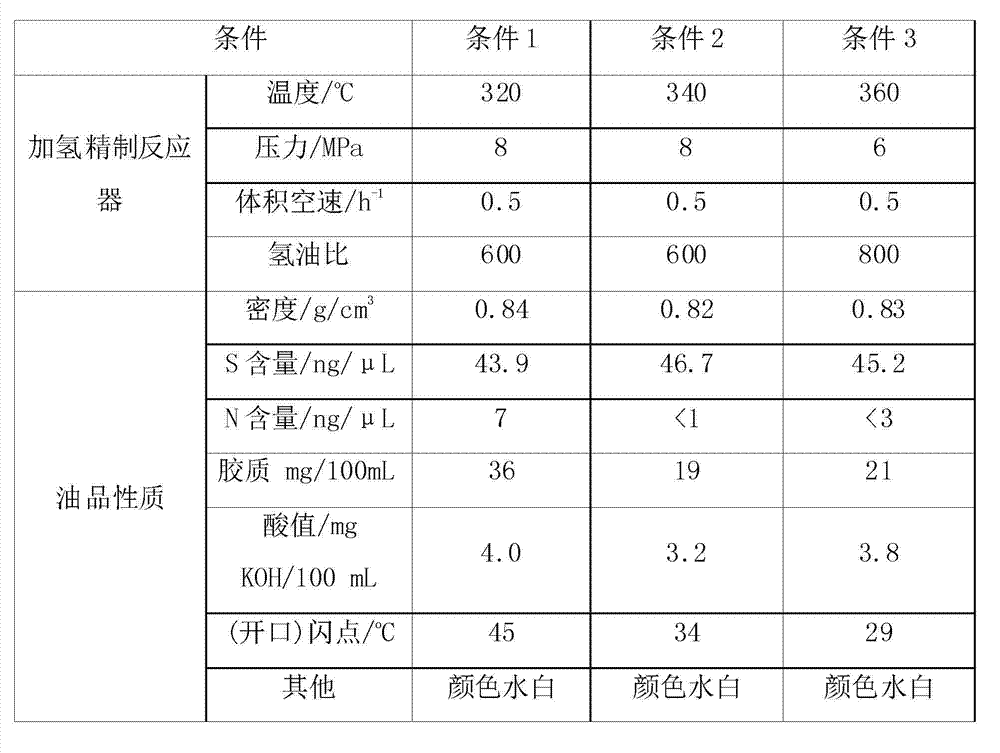Coal tar hydrogenation upgrading method
A technology of hydrogenation upgrading and coal tar, which is applied in the field of energy technology and environmental protection, can solve the problems of low gasoline and diesel yield, environmental pollution, and low added value, so as to reduce the colloid content, avoid secondary pollution, and improve Yield effect
- Summary
- Abstract
- Description
- Claims
- Application Information
AI Technical Summary
Problems solved by technology
Method used
Image
Examples
Embodiment 1
[0020] Example 1: Gas-phase catalytic cracking of coal tar over a molecular sieve / alumina catalyst. The heavy oil is injected into a catalytic distillation column equipped with a molecular sieve / alumina catalyst for catalytic distillation. The catalyst is composed of alumina containing 35% ZSM-48 and 15% mordenite, and a columnar product of 2.0-3.0 mm is obtained by bonding , length 3-8 mm, bulk density 0.65-0.80 g / mL, strength greater than 40 N / mm. The waste residue and gas generated during the waste plastic oil conversion process are used for heating, and the agent-oil ratio is controlled between 1-20. The gas produced is used to heat the distillation column. See Table 1 below for catalytic distillation material balance test results
[0021]
50% light oil
heavy oil
Catalyst adsorption
gas + loss
quality
2000
60
1000
740
100
100
percentage%
3
50
37
5 ...
Embodiment 2
[0024] Example 2: Heavy oil was delayed coking to obtain light oil. See Table 3 below for delayed coking material balance test results
[0025]
Embodiment 3
[0026] Example 3: The supported nickel molybdenum sulfide catalyst is a hydrorefining catalyst. The carrier adopts SiO 2 -Al 2 o 3 , the specific surface area is 200-400 m 2 / g, the pore volume is 0.5-2.0 cm 3 / g, the most probable pore size distribution is 2-4 nm and 10-15nm. The precursor of nickel molybdenum sulfide is nickel nitrate or nickel acetate and ammonium thiomolybdate. The supported nickel-molybdenum sulfide catalyst was prepared through the steps of impregnation-drying-calcination by equal volume impregnation method. The following table 4 sees reaction process conditions and product composition.
[0027]
[0028] As can be seen from Table 4, the oil fraction is 340% on the supported nickel-molybdenum sulfide catalyst. o Above C, 8MPa hydrofining can effectively remove sulfur and nitrogen, and greatly reduce colloids, indicating that the supported nickel-molybdenum sulfide catalyst has a good ability to remove heteroatoms, and the obtained product is wat...
PUM
| Property | Measurement | Unit |
|---|---|---|
| length | aaaaa | aaaaa |
| strength | aaaaa | aaaaa |
| specific surface area | aaaaa | aaaaa |
Abstract
Description
Claims
Application Information
 Login to View More
Login to View More - R&D
- Intellectual Property
- Life Sciences
- Materials
- Tech Scout
- Unparalleled Data Quality
- Higher Quality Content
- 60% Fewer Hallucinations
Browse by: Latest US Patents, China's latest patents, Technical Efficacy Thesaurus, Application Domain, Technology Topic, Popular Technical Reports.
© 2025 PatSnap. All rights reserved.Legal|Privacy policy|Modern Slavery Act Transparency Statement|Sitemap|About US| Contact US: help@patsnap.com



